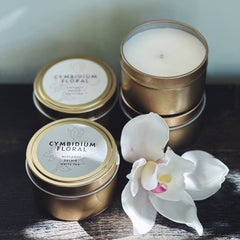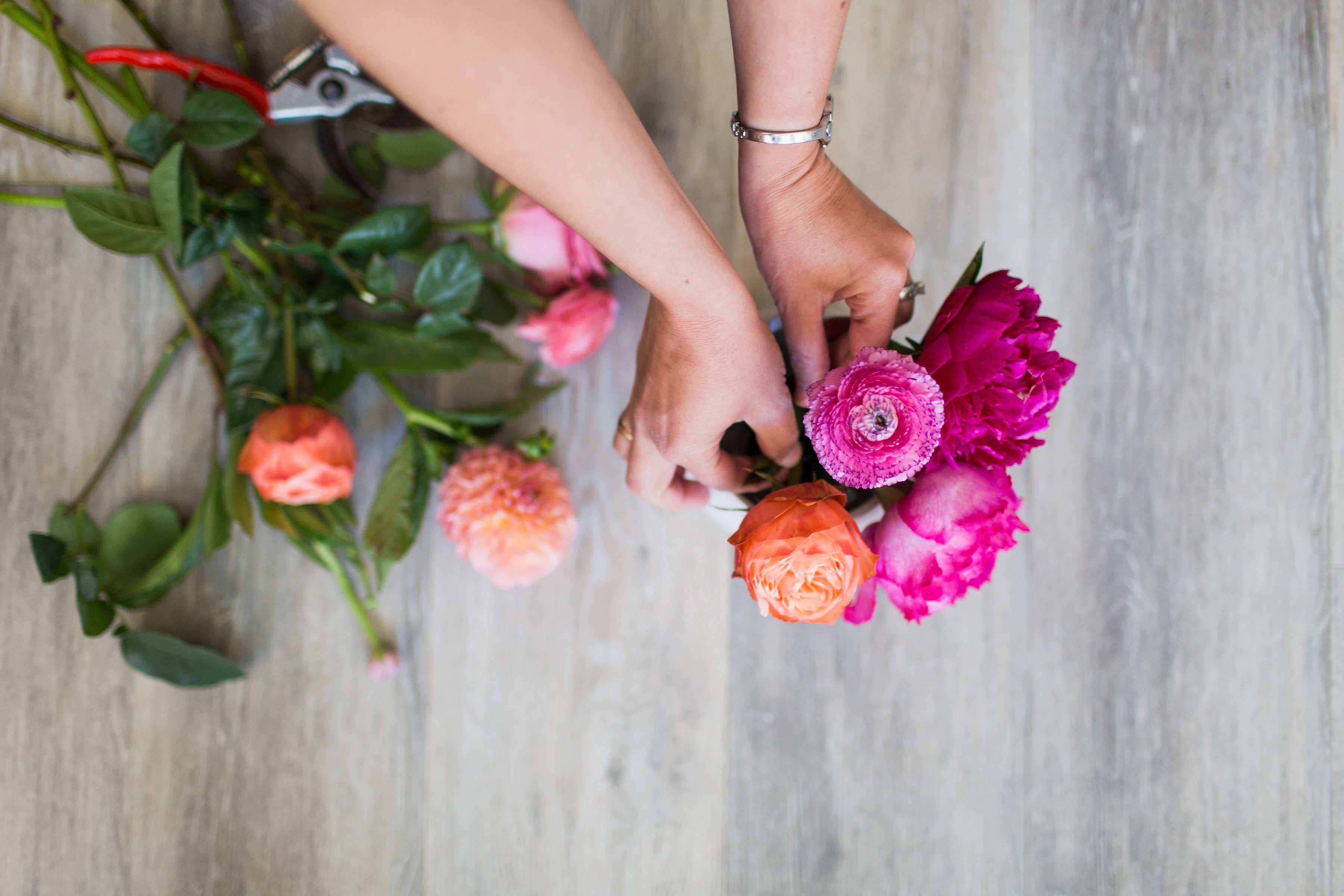
Flower & Plant Care Instructions

Cut Flower Care
General | Display your flowers in a cool location, out of direct sunlight. Check the water level daily. Change the water every few days washing out the vase with dish detergent, rinsing thoroughly. Cut the stems before putting them in clean water. If you have a hydrangea that wilts, re-cut the stem as soon as you notice it wilting & usually it will revive.
Arranged flowers | When you receive your vased arrangement, check the water level & add water to fill the container to the top.
Loose flowers | Cut the stems of the flowers at an angle with gardening clippers or sharp scissors & then immediately put the stems in water.
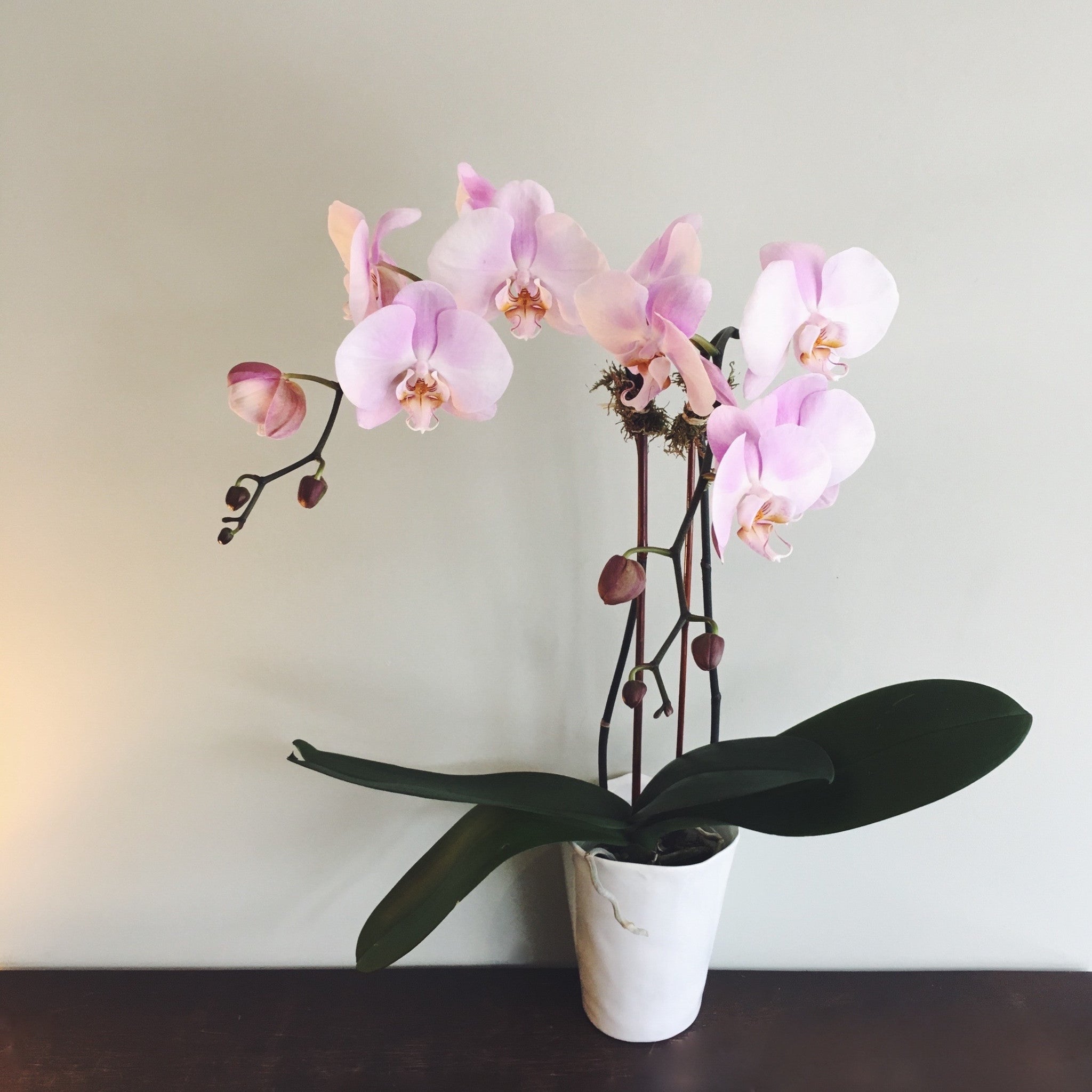
Orchid Plant Care
Light | Bright light, no direct sun; east, west, or shaded south window is best. Dark green, limp foliage indicates too little light.
Humidity | Orchids thrive at 50 – 70% humidity; to increase humidity, set the plant on a tray with moistened pebbles.
Water | Take care not to over-water your orchid plant. Check by placing your finger an inch deep in the potting mixture. It’s ready for water when it feels fairly dry but not bone dry. If the potting mixture feels wet, re-check in a few days. To water, take the plastic pot out of the decorative pot and place it in the sink. Let room temperature water run through the potting mixture until it is fully saturated. Leave it in the sink to drain out completely before putting it back in the decorative pot — it’s not good for the plant to sit in water. Using this watering method, you should only have to water your orchid approximately every two to three weeks. Timing will vary depending on the location in your home and the dryness/ humidity of the air.
General | This will provide the best chance (about 60%) for a second flowering. As the blooms begin to fade, pluck them off the stem. Once all the blooms are gone, trim back the stem to the second node on the stem. Continue to care for the plant as if it had blooms.
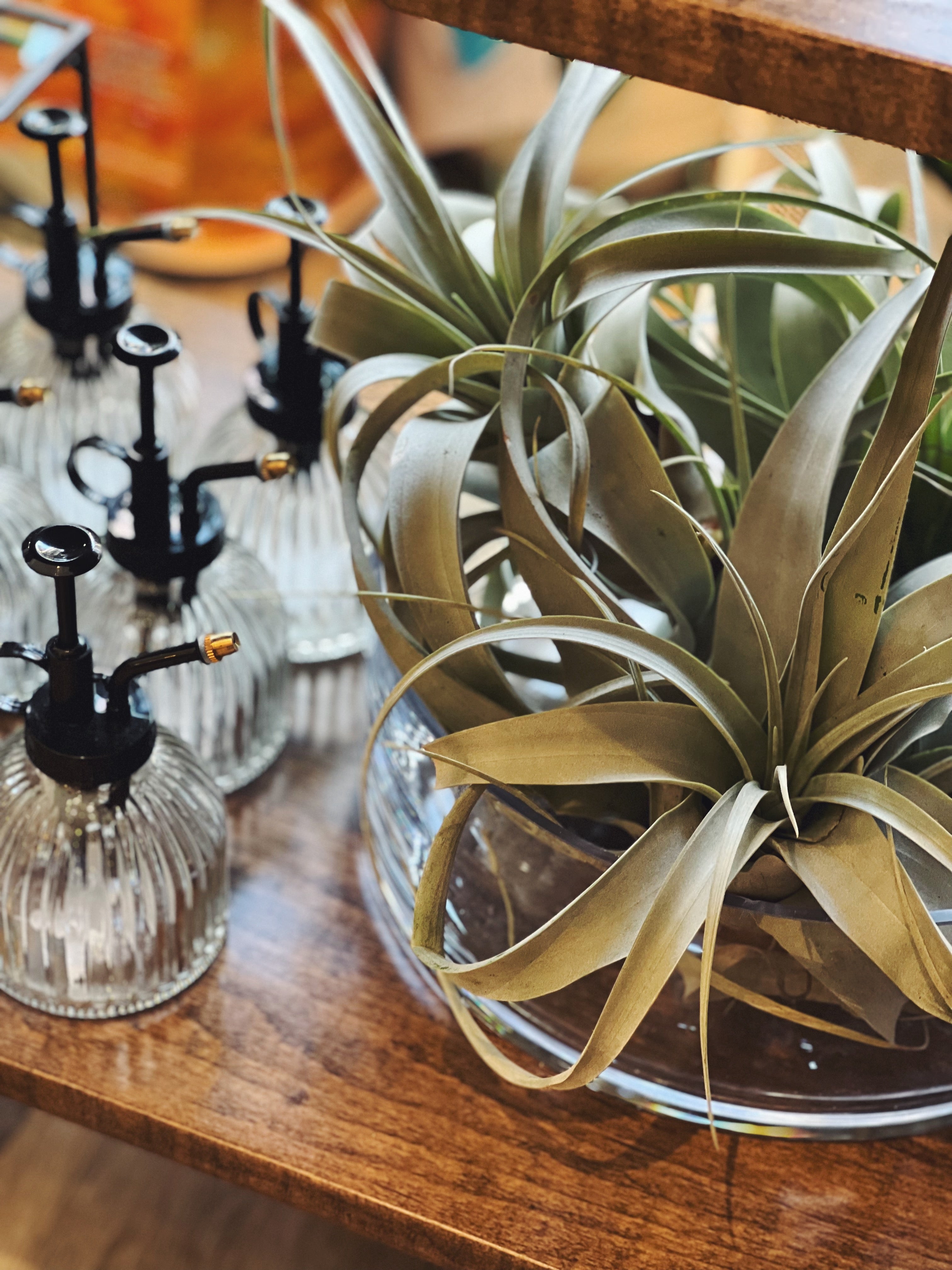
Air Plant Care
Air plants (tillandsia) grow without soil, receiving water & nutrients through their leaves.
Light | Keep air plants where they will receive bright, indirect sunlight.
Water | Water your air plant once a week by giving it a thorough rinsing under the faucet or soak your airplant for 20~30 minutes. A plant in bloom should be rinsed rather than submerged in water; take care when rinsing the delicate flowers. You will begin to notice that after watering, your plant’s leaves will feel stiffer and full of water. They will appear softer and lighter in color when they are in need of water. Wrinkled or rolled leaves can be a sign of dehydration.
General | It is normal for some of the lower leaves to dry out as the plant grows or acclimates to a new environment; those leaves can be gently pulled off of the plant. If the leaf tips have dried out, you can snip the dried tip off (trimming at an angle for a natural look). Air plants will bloom and produce flowers only once during their lifetime, lasting anywhere from days to months.
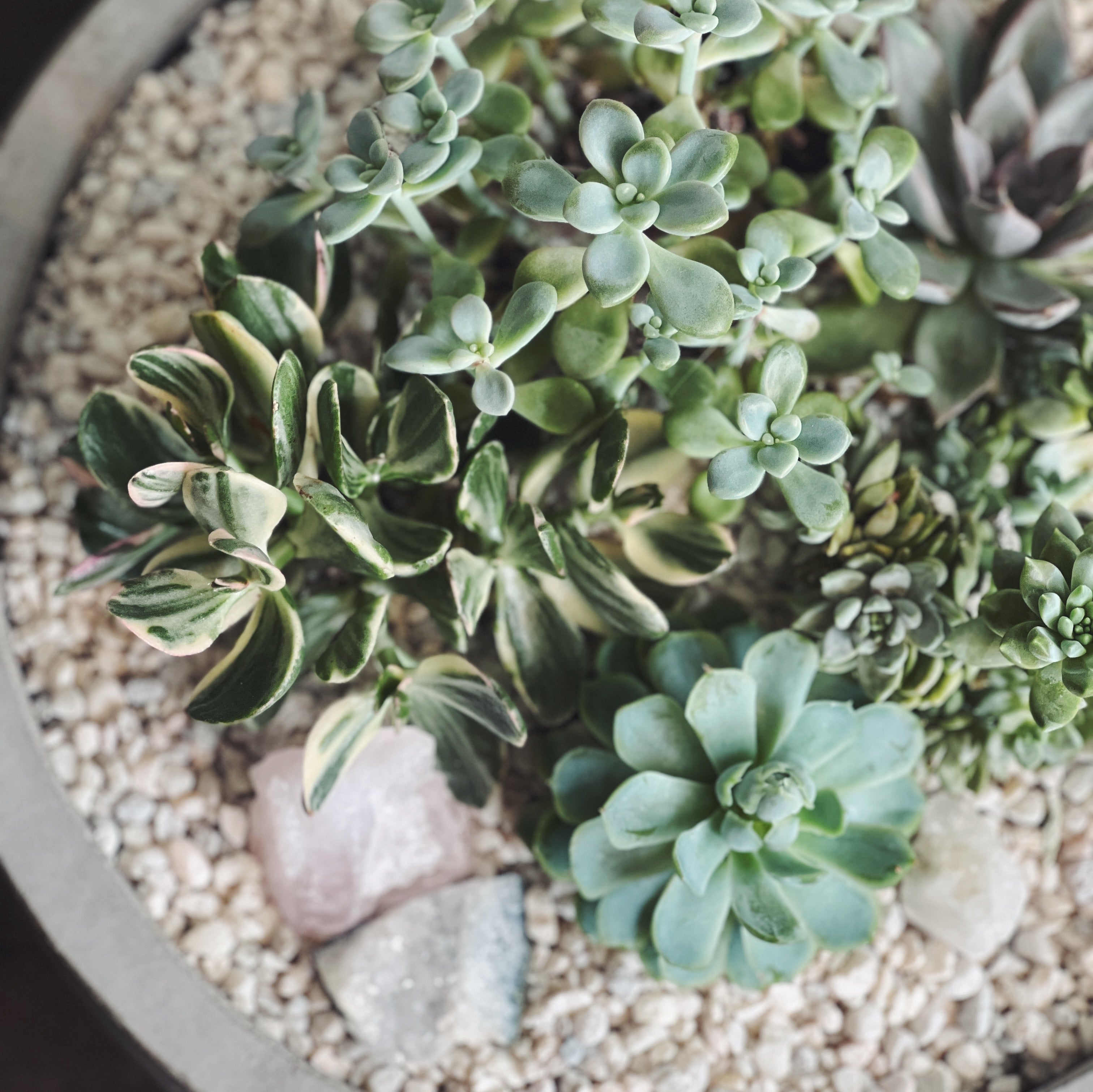
Succulent Care
Most succulents are very hardy and unlike many other plants, thrive on neglect!
Light | Most cacti and succulents like bright light. Most require either filtered sun most of the day or 1 to 2 hours of direct sun each day. Many will survive quite well in full sun.
Water | During the warmer months, spring through fall, water thoroughly, then let the soil go dry before rewatering (approximately every 2 weeks). Check to see if the soil is moist by putting your finger about an inch down into the soil. Late fall to early spring, water a little less frequently. When in doubt it is safer to underwater than to overdo it. Succulents store water in their stems and leaves and can tolerate periods of dryness without harm. If the container does not have any drainage holes, water just a little bit so the roots do not sit in water. If the pot does have drainage holes, take the plant to the sink and water thoroughly so the water drains out the bottom.

